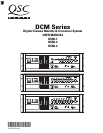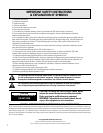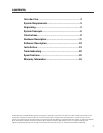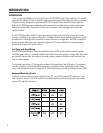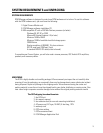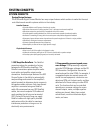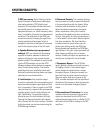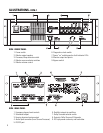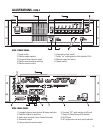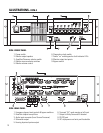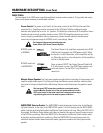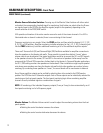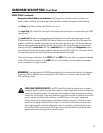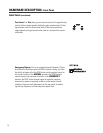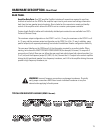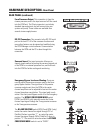
6
System Design Features
The DCM series Digital Cinema Monitor has many unique features which combine to make this the most
cost effective and versatile systems solution in the industry.
Installer Features:
•Provides Monitor and Crossover functions in one box.
•Minimizes the amount of cabling required. Only 1 cable per two-channel amplifier!
•Minimizes setup time, particularly in megaplexs with similar rooms.
•Provides speaker setting database for most common theater speaker brands and models.
•Indicates if something is wrong with the sound system and provides diagnostic feedback.
•Emergency bypass allows center channel sound to pass through even if there is a major problem.
•Allow easy routing and crossover adjustments.
•Protects system adjustments from tampering.
•Sound quality is state-of-the-art (high dynamic range).
Projectionist Features:
•Easy to verify all of the audio in the theater is okay.
•Automatic monitoring will light an LED if there is trouble with a speaker output.
•A backup system (emergency bypass) can be easily activated.
1. QSC Amplifier DataPorts: The DataPort
connectors reduce the complexity of wiring
between the DCM and the amplifiers. The
DataPort connections replace amplifier audio
input cables and amplifier output monitor
connections. Another unique feature of the QSC
Cinema System is the ability to automatically
analyze voltage and current on the amplifier’s
output terminals to determine shorts or opens in
the speaker cables or drivers. Each two-channel
amplifier is connected using one DataPort
cable. We recommend you use QSC DataPort
cables, but normal computer VGA cables will
work providing that all pins are terminated.
QSC’s Technical Services Group can supply
DataPort cables with high quality shielded
audio wires within the cable for maximum
interference protection on long runs or for
electrically-noisy environments.
SYSTEM CONCEPTS
SYSTEM CONCEPTS
2. Programmable processing and cross-
over settings: DCM processing is adjusted
using the DCM Manager software and the RS-
232 connection. Configuration files can be
saved and used for other DCMs. For example, if
a megaplex theater has several rooms with
similar size and equipment, a technician can
adjust one DCM unit for best results, and then
download all of these settings to other DCM
units. The functions that can be controlled
remotely are: crossover settings for screen
channel outputs, mutes, multiple equalizer
settings per channel, delay times, output
volume levels, monitor mix balance adjust-
ments, and more.



